The 186 people of Koimaya get their water from holes dug into a swamp. The water is not safe to drink, but they have no choice.
"This water source is not safe and pure to drink," said our field officer, Alie. "There are [a] lot of contaminants [in the water] such as spirogyra (algae), tadpoles, etc., but it is the only water source for this community, and they depend on [it]. The location of these scoop holes is not safe because it is a bushy area, and a place where snakes move all about [in] search of prey. I would not drink this water. Due to [the] drinking of contaminated water in the community, the people are experiencing diseases such as typhoid, itching [rashes] on [their] skin, diarrhea, and stomachaches."
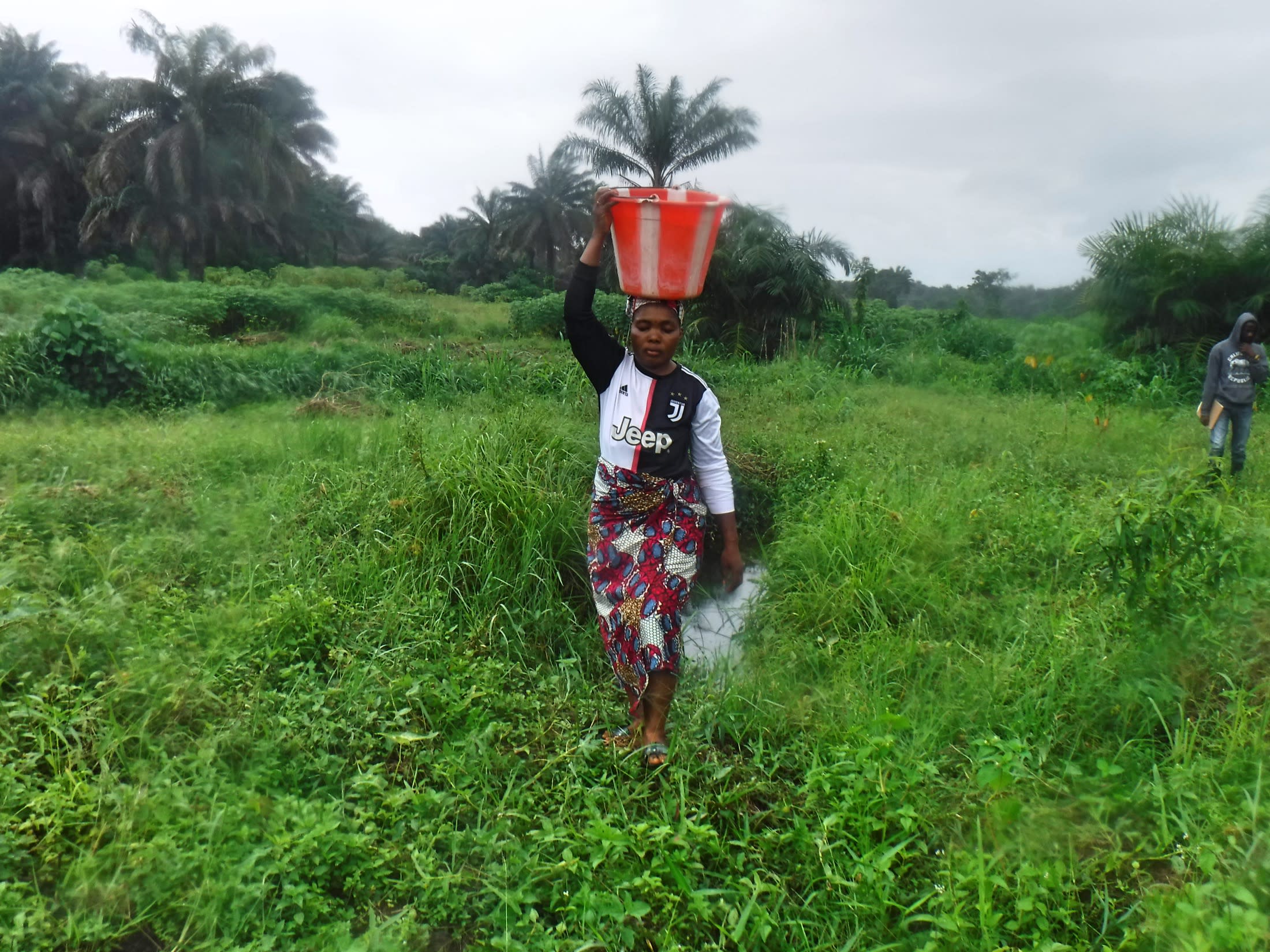
"The place where I fetch water [from] is a swamp well, so when I reach the place, I have to dip [my bucket] in the well, then fetch water," explained 25-year-old trader Fatmata Kamara (shown above leaving the water source). "It is a high risk to fetch water from this source."
"Going to the swamp in search of water is also not easy for me," said 15-year-old Adikale K (shown below fetching water). "My sisters and I also struggle a lot to bring water to the house for my mother to prepare food for us and for everyone to bathe."
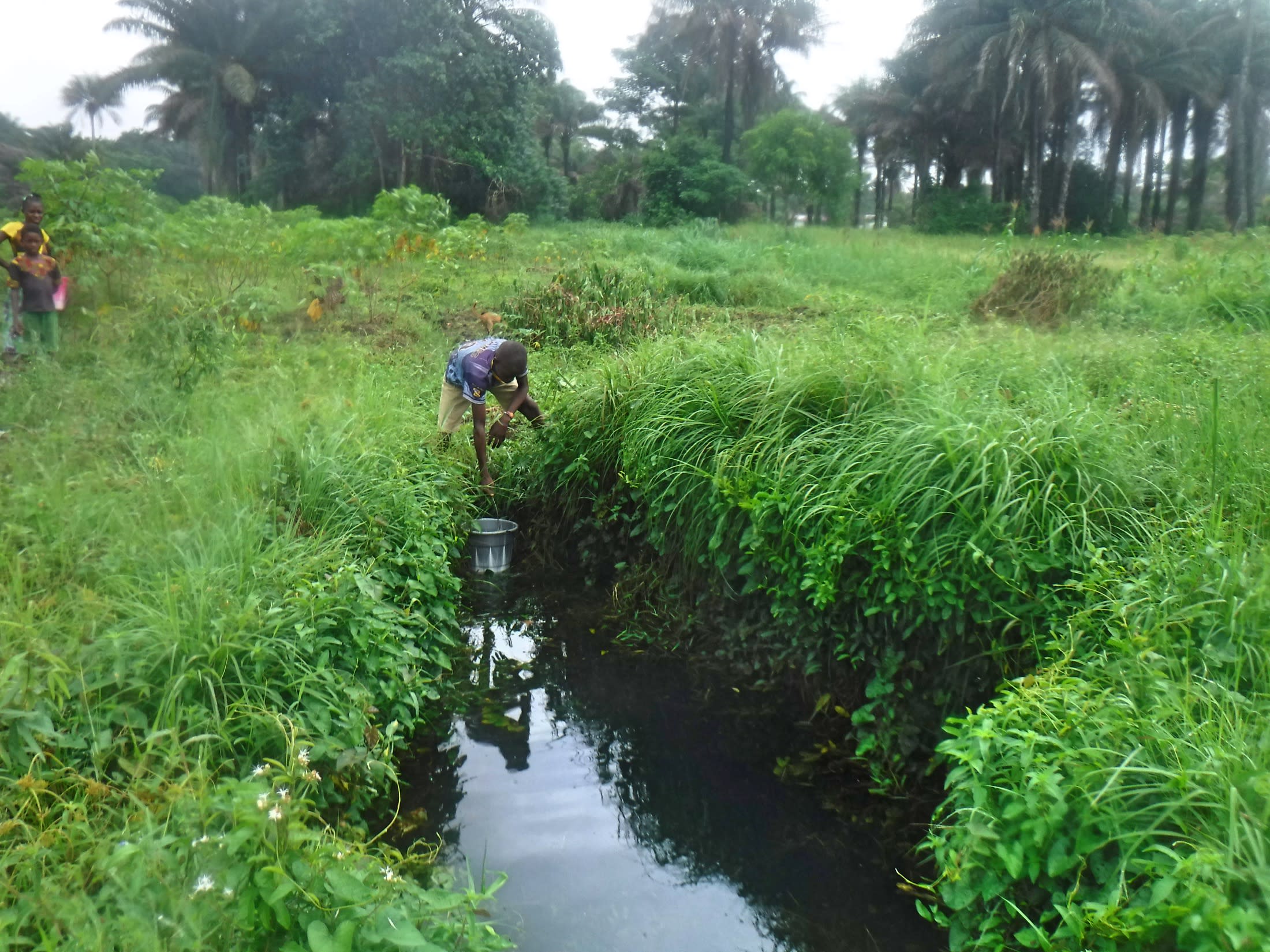
Bending down to fetch water from a scoop hole is not ideal under any circumstances. But each season brings its own unique challenges, meaning that the people of Koimaya dread fetching water all year 'round.
"During the rainy season, the water source becomes contaminated more," Fatmata explained. "It gets dirty because [of] all [the] rubbish deposited there."
Rains provide more water, but they also wash contaminants from households, farms, and latrines directly into the water that people later drink, which causes spikes in cases of water-related disease. And, unfortunately, the community members contaminate the water themselves.
"I usually carry my dirty clothes to the swamp to launder them," Adikalie said. "I cannot fetch enough water to the house to launder my clothes because it is very difficult. The road is far, bushy, and slippery to carry water on my head. I can only try my best to provide water to the house for daily use."
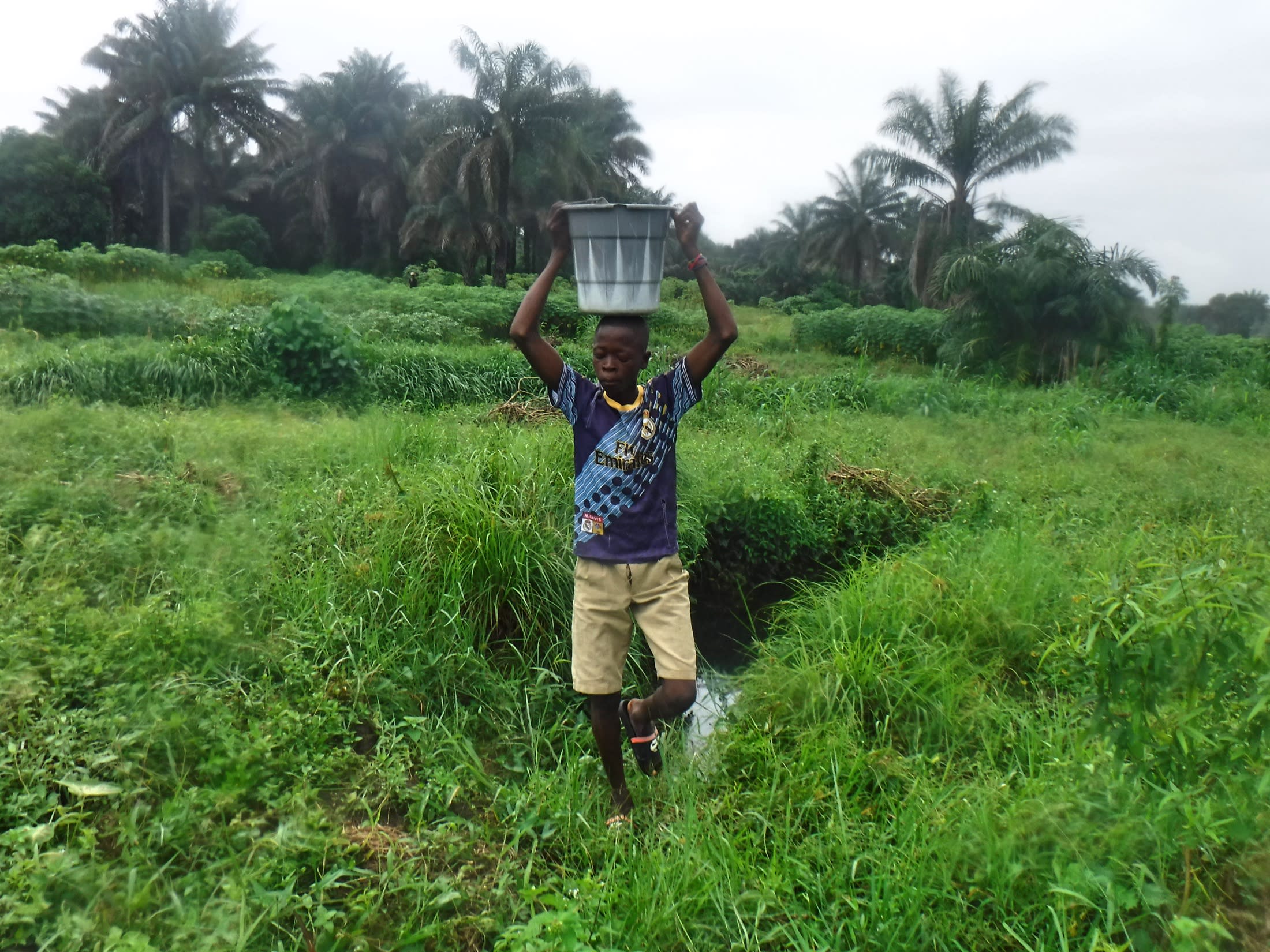
The wet season makes the water riskier to drink, but contaminated water is better than no water at all. When the rainy season ends, community members watch the water level in the scoop hole shrink lower and lower until it becomes only a pool of mud.
"During the dry season, the [scoop hole] produces [a] low quantity of water," Fatmata continued. "So, at that time, I have to hang my rubber bucket on a stick, then dip it in the [hole]. It is hard to pull out a bucket of water from the hole. This situation damages my bucket frequently, and it is hard for me to buy another bucket."
"Sometimes, when there is not enough water [at the swamp], it would be more difficult to fetch clean water," said 15-year-old Adikalie K (shown above). "The water will become dirty after the first dip of [a] bucket. It would not be easy for me to fill all the containers at the house with clean water."
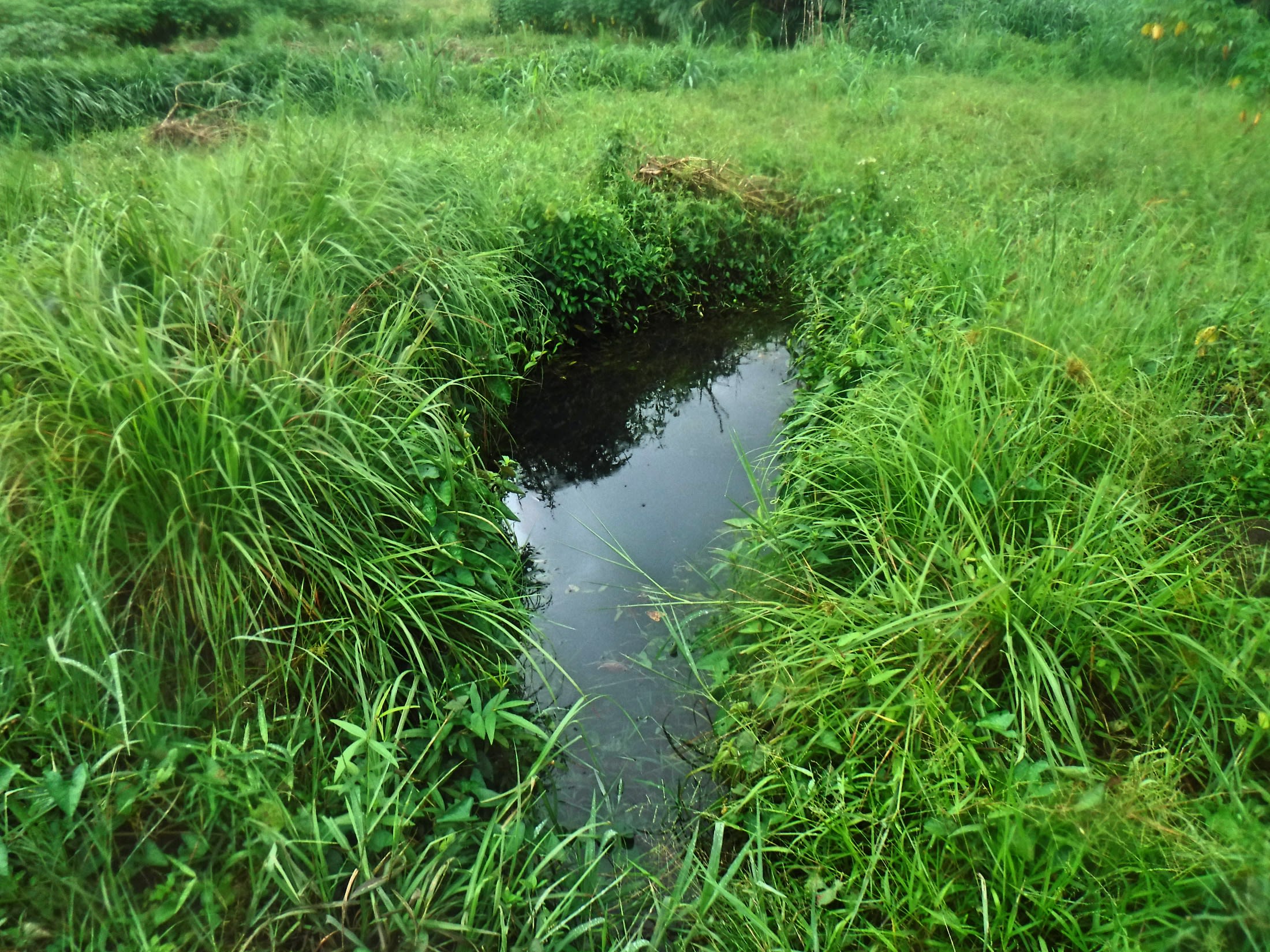
People get desperate for water in the dry season. So some community youths will dig the scoop hole deeper or even make a new hole in the hopes of reaching more water. But the days spent doing this without anyone being able to get water only add to the acute water shortage in the community.
With no one able to get enough water to accomplish what they need to, the consequences are both immediate and long-reaching.
Community members would rather fetch water for drinking in the mornings before it has been muddied by the buckets of many people stirring up sediment from the bottom of the pool (even though clear water is not necessarily clean water). But this means that kids like Adikalie are often late to school.
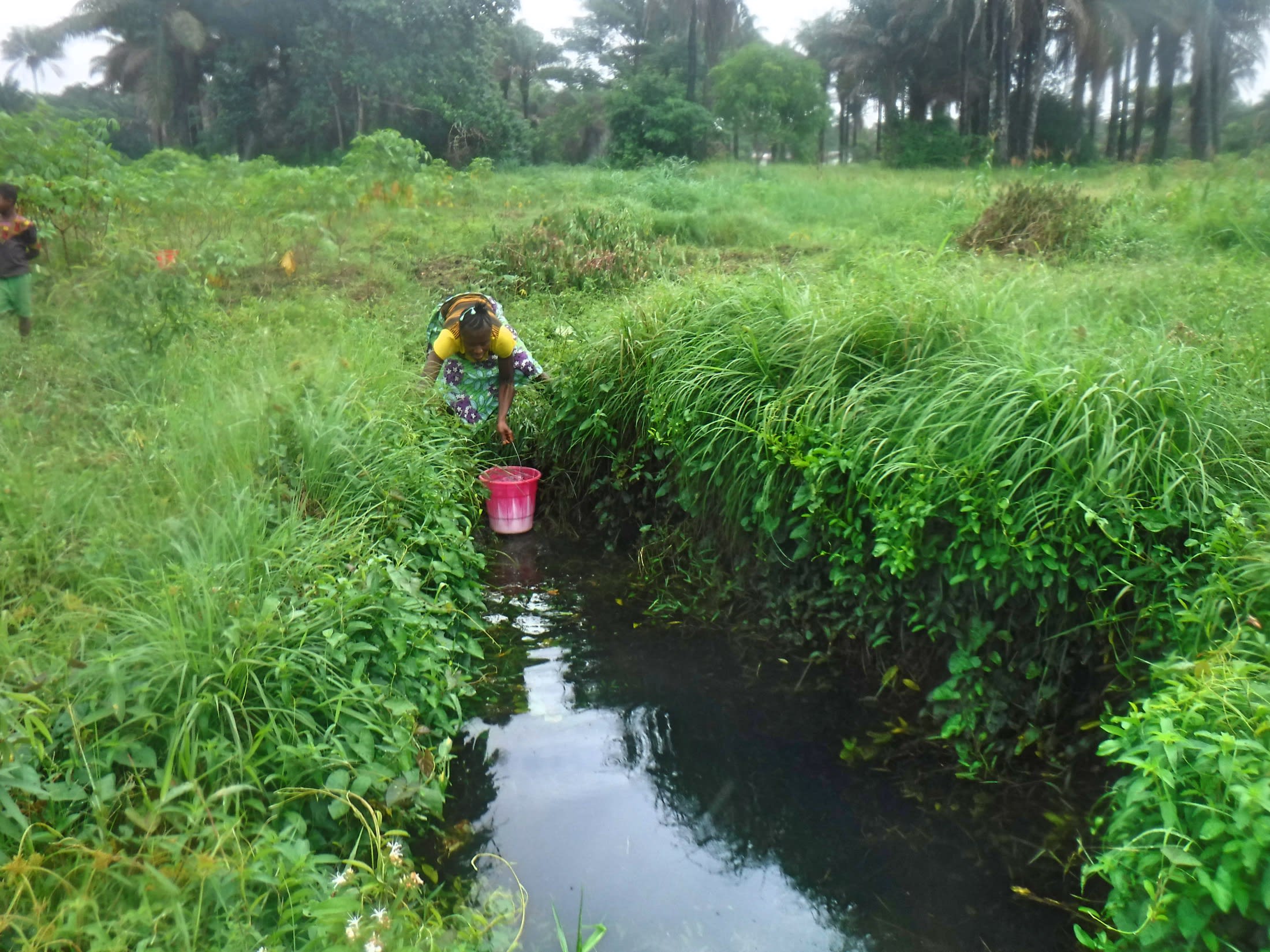
"I fetch drinking water early in the morning before going to school," Adikalie said. "This is the time the water is clean to drink. I must wake up very early in the morning to fetch drinking water so I would not be late for school. If I go to school late, I would be punished by my teacher at the school."
"Due to [the] water problem in the community, I do not go [to] trade on time, and this causes me to get low income [and] also not to trade on daily basis," Fatmata said. "I have to prepare food for my family, [but] sometimes I [am] late to prepare food due to [the] water crisis in the community. During the weekends, I find it difficult to launder my clothes. Sometimes I would not complete this task."
The people of Koimaya need a water source of their own so that they will be healthier and able to accomplish everything they need to. With a bit of help, hopefully, they will be able to do more and feel better without fear that their water source will inevitably dry up and interrupt their lives.
What We Can Do:
New Well
Where we will be drilling is centrally located and will relieve many people of the long journey to fetch water and the challenge of accessing clean water.
Our team will drive over the LS200 mud rotary drill rig and set up camp for a couple of nights. Once the well is drilled to a sufficient water column, it will be cased, developed, and then tested. If these tests are positive, our mechanics will install a new India Mark II pump.
Once this borehole is drilled, the surrounding community will be provided with plenty of accessible, clean drinking water.
Training
There will be hygiene and sanitation training sessions offered for three days in a row.
Community members will learn how to make a hands-free handwashing station called the "tippy-tap." We will use these tippy taps for handwashing demonstrations and will also teach about other tools like dish racks and the importance of properly penning in animals. We will highlight the need to keep restrooms clean, among many other topics.
This training will also strengthen a water user committee that will manage and maintain this new well. They will enforce proper behavior and report to us whenever they need our help in solving a serious problem, like a pump breakdown.



 Borehole Well and Hand Pump
Borehole Well and Hand Pump
 Rehabilitation Project
Rehabilitation Project
























